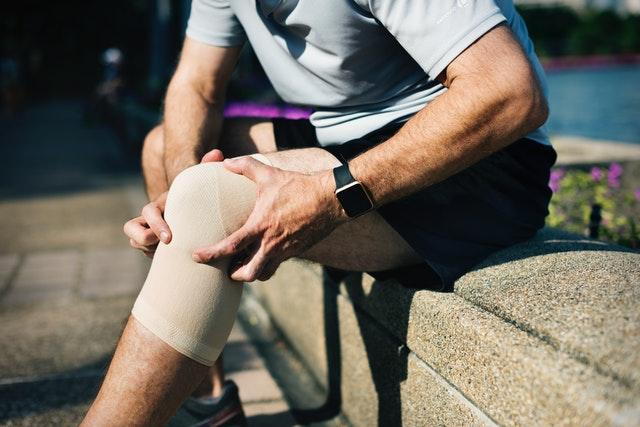Jumper's Knee (Patellar Tendonitis): How chiropractic can help

- posted: Feb. 14, 2012
What is Jumper's Knee?
Jumper's Knee is a problem that occurs when there is inflammation or injury of the patellar tendon, right underneath the kneecap.
Causes of Jumper's Knee:
Jumper's knee is an overuse or repetitive injury that occurs over time. This injury can happen with any sport that requires constant jumping, landing, and changing direction. This can cause strains, tears, and damage to the patellar tendon.
Jumper's knee can seem like a minor injury and a lot of people ignore it until they can't stand it anymore. Because of this, many athletes keep training and competing and tend to ignore the injury or attempt to treat it themselves. However, this strain can lead to a serious condition. Bones, joints and muscles in the knee work together to flex and extend the knee.
When the knee is extended, the quadriceps muscle pulls on the quadriceps tendon, which in turn pulls on the patella. Then, the patella pulls on the patellar tendon and the tibia and allows the knee to straighten. In contrast, when bending the knee, the hamstring muscle pulls on the tibia, which causes the knee to flex. In jumper's knee, the patellar tendon is damaged. Since this tendon is crucial to straightening the knee, damage to it causes the patella to lose any support or anchoring.
This causes pain and weakness in the knee, and leads to difficulty in straightening the leg.
Symptoms of Jumper's Knee:
1. Pain directly over the patellar tendon (or below the kneecap)
2. Stiffness of the knee, particularly while jumping, kneeling, squatting, sitting, or climbing stairs
3. Pain when bending the knee
4. Pain in the quadriceps muscle
5. Leg or calf weakness
6. Warmth, tenderness, or swelling around the lower knee
7. Balance problems
Treatments for mild to moderate jumper's knee:
1. Resting from activity or adapting a training regimen that greatly reduces any jumping or impact
2. Icing the knee to reduce pain and inflammation
3. Wearing a knee support or strap (called an intrapatellar strap or a Chopat strap) to help support the knee and patella. The strap is worn over the patellar tendon, just beneath the kneecap. A knee support or strap can help minimize pain and relieve strain on the patellar tendon.
4. Elevating the knee when it hurts (for example, placing a pillow under the leg)
5. Anti-inflammatory medications, like ibuprofen, to minimize pain and swelling
6. Massage therapy
7. Minimum-impact exercises to help strengthen the knee
8. Rehabilitation programs that include muscle strengthening, concentrating on weight-bearing muscle groups like the quadriceps and calf muscles.
How long does it take to recover from Jumper's Knee?
Recovery can take a few weeks to several months. It's best to stay away from any sport or activity that can aggravate the knee and make conditions worse. However, recovering from jumper's knee doesn't mean that someone can't participate in any sports or activities.
Depending on the extent of the injury, you can still play the sport you love, you just need to maintain stretching and maintenance to the joint.
How can we prevent Jumper's Knee?
The most important factor in preventing jumper's knee is stretching. A good warm-up regimen that involves stretching the quadriceps, hamstring, and calf muscles can help prevent jumper's knee. Sometimes applying heat to the area helps as well before a work out. It's always a good idea to stretch after exercising, too.
Dr. Amie Gregory, DC, CCEP, ANF is a San Francisco, CA and San Carlos, CA chiropractor that understands full body health. She works with athletes, expectant moms, office workers and everyone else in between. Contact our San Francisco, CA chiropractic office or San Carlos, CA chiropractic office today!
Location
Find us on the map - Please click desired location below
Precise Moves Chiropractic San Francisco
3150 18th Street, Suite 334
San Francisco, CA 94110, United States
24 hour Scheduling makes it easy!
(Hours may change due to doctor availability)
Hours in the mission district, San Francisco
8-12pm
Closed
3-6PM
8-12PM
3-8PM
8:00 am - 12:00 pm
Closed
